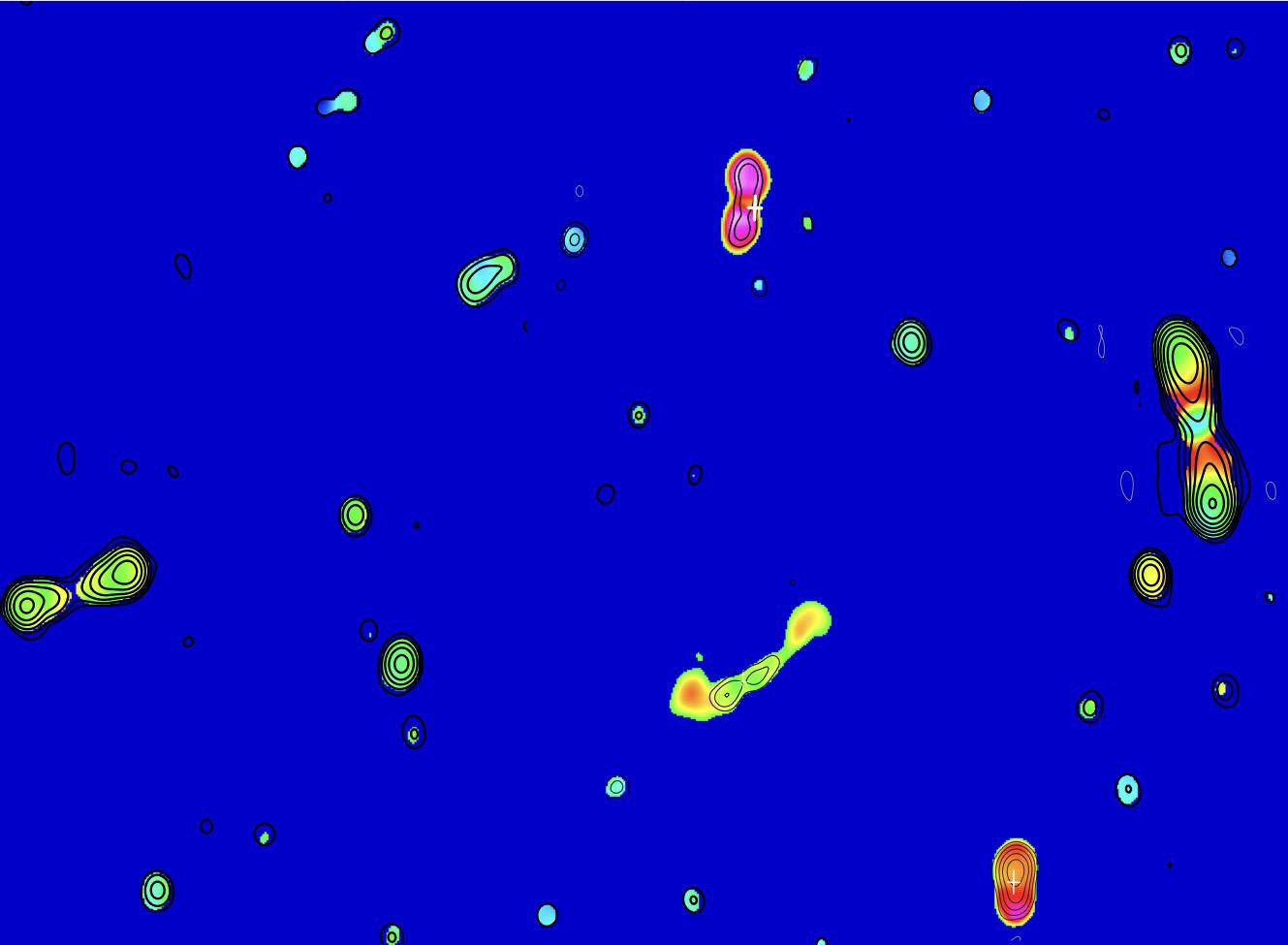
2 minute read
Life cycle of supermassive black hole revealed
from Contact 07
Using both the Low Frequency Array (LOFAR) and the Westerbork Synthesis Radio Telescope (WSRT-Apertif), two SKA pathfinder facilities, astronomers have measured the life cycle of a supermassive black hole. It is the first time that both radio telescopes of the Netherlands Institute for Radio Astronomy (ASTRON) took part in the same survey and were used to observe the same part of the Universe. This proof of concept study, part of the LOFAR deep fields surveys, shows that a combined LOFAR/WSRT-Apertif survey can reveal in which phase of a cycle a supermassive black hole currently is.
Supermassive black holes have both ‘active’ and ‘quiet’ phases. In their active phase they eject huge amounts of energy which eventually can expel gas and matter from galaxies and impact the entire formation of new stars. These ejections are believed to last from tens of millions to a few hundred million years. After this, the supermassive black hole enters a quiet phase.
Part of the ejected energy – also called ‘flux’ – comes in the form of radio waves, both at low and high frequencies. A combined observation with LOFAR and WSRT-Apertif – both pathfinders for the SKA – was able to detect these emitted radio waves. “High frequency radio waves quickly lose their energy, their flux – and, as a consequence, their brightness – while those in the lower frequency do so much more slowly,” says Prof. Raffaella Morganti, first author of the paper “The best of both worlds: Combining LOFAR and Apertif to derive resolved radio spectral index images”.

Above: Part of the radio sky observed by this project where many galaxies with supermassive black holes emitting radio waves can be seen. The colours give an indication of the phase in the active life of the supermassive black hole. The red colours represent emission from black holes in the later phase, at the end of their active life. Greener colours represent black holes in their “youth”.
Credit: Raffaella Morganti/ASTRON.
In a previous study, LOFAR was used to find possible supermassive black holes in the quiet or active phase. In this study these same sources were surveyed also using WSRT-Apertif. The relative strength of the radio emission at the two different frequencies is used to derive, to first order, how old a radio source is and whether it is already in a quiet phase.
Astronomers believe that a black hole can start a new ejection cycle multiple times in its existence. Observing supermassive black holes with both LOFAR and WSRT-Apertif, scientists have been able to say which of them are, at present, ‘switched off’ and how long ago that happened. They also have identified cases where the ejection phase of the supermassive black hole has ‘recently’ restarted.
“Interestingly, the relative number of radio galaxies found in the ‘out’ phase is also telling for how long a supermassive black hole has been ‘switched off’. These objects are rare, therefore large surveys are necessary to find enough of these sources so that we have a large enough database for statistical analysis,” Prof. Morganti adds. In the future, the team would like to do further studies observing other supermassive black holes in the same manner.
By Mischa Brendel (ASTRON)










